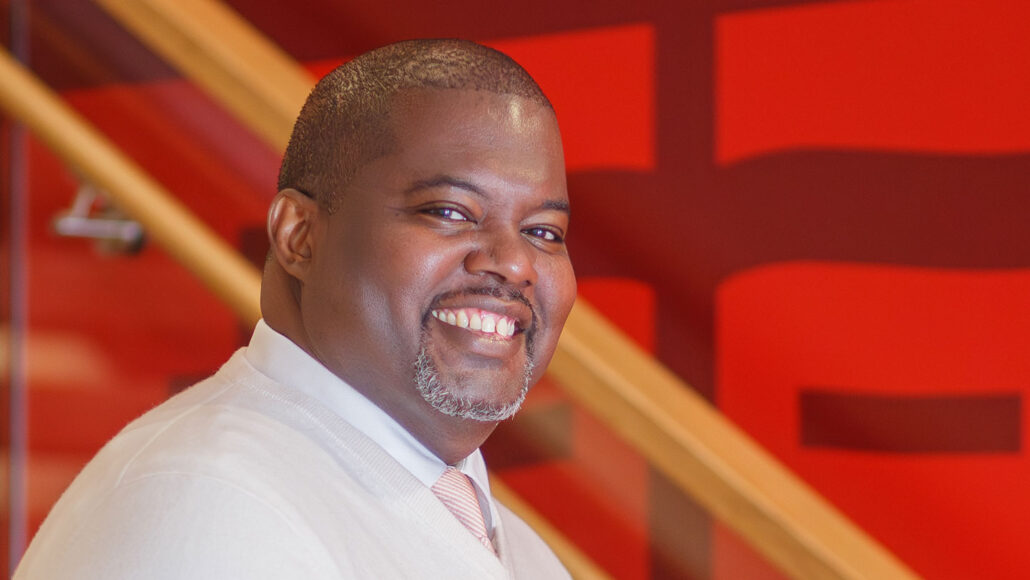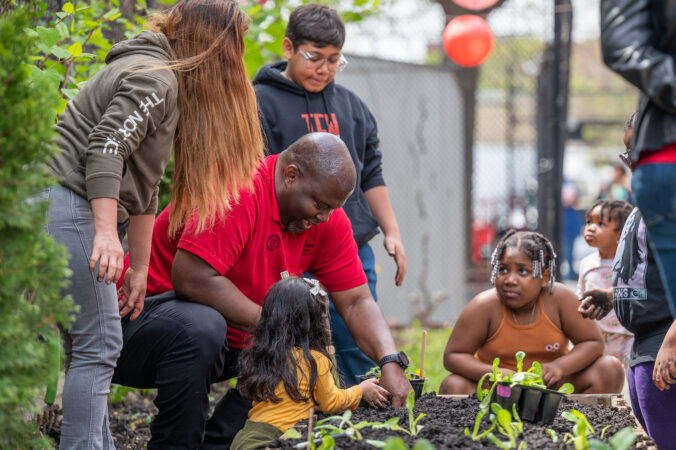This urban gardener is mimicking nature to create healthier plants
Kwesi Joseph has ideas about how rocks and plants might team up against climate change

Kwesi Joseph studied geology in college. His studies inspired him to test how crushed basalt could help grow healthier plants. Though his first tests didn’t pan out, he’s hoping for better results this year.
R.J. Anderson/Cornell Cooperative Extension
Kwesi Joseph’s passion for soil health started while trying to fix his backyard garden. He turned to a local community garden for help. That’s where he learned about natural farming. This type of growing doesn’t rely on harsh chemicals to help plants thrive. Instead, gardeners use processes already found in nature. Adding eggshells and compost can boost nutrients in the soil, for instance. Integrated pest management attracts insects and birds that eat common garden pests. “It’s like having a military in your backyard,” says Joseph. “But it’s one designed by nature.”
Gardening also inspired Joseph to experiment. He wondered if crushed rocks could provide plants with essential nutrients. A former high school earth science teacher, Joseph already knew a lot about rocks. “When I learned what [these] micronutrients were, my geology background kicked in,” says Joseph, now an urban garden specialist with the Cornell Cooperative Extension in New York City.
Working with a scientist from Cornell University, Joseph started conducting trials with basalt “rock dust.” Basalt is a type of rock that contains micronutrients. These micronutrients can capture carbon dioxide from the atmosphere and trap it in solid minerals. Joseph thought gardeners might be able to use this widely available rock to grow healthier plants while also helping with greenhouse emissions. Although his first trials didn’t work out, Joseph plans on conducting another round later this year.
Joseph also helps community and school gardens in New York City troubleshoot problems they may have while growing plants. Rock dust trials aren’t part of his job as an urban garden specialist, he says. But working with rock dust would allow him to help community gardens he wouldn’t normally work with. In this interview, he shares his experiences and advice with Science News Explores. (This interview has been edited for content and readability.)
How did you get to where you are today?
I got into gardening as a way to reduce stress. I see a lot of people in community gardens looking to do the same thing. After trying it out — and not knowing what I was doing — I threw myself into learning more about gardening. I realized that there wasn’t an equilibrium in the backyard. So I wanted to make it a safe place for insects. Instead of using pesticides, I grew a wide variety of flowers that attracted the real killers. And they reduced the pest pressure in the garden. I’m slaughtering the pests just by growing flowers. That was interesting to me. Just looking at nature and trying to mimic it.
How do you get your best ideas?
I’m a creative. And I like to read. My mind just twists stuff around and asks, “what if?” I majored in industrial design at Brooklyn Tech. My friends used to make fun of me about it, though. One used to call it “advanced finger painting.” I was one of those kids who broke apart toys to see how they operated and couldn’t put them back together. But with gardening, you get to deconstruct things. That’s the beauty of gardening. It’s trial and error.

What was one of your biggest successes?
In 2013, I was growing a bush variety of tomatoes, an orange tomato. But the leaves started disappearing. I didn’t know what was happening. When I started looking really closely, I saw green hornworms. Two or three of these caterpillars had decimated the plants.
I learned that planting sweet alyssum or “carpet of snow” would attract parasitoid wasps. If you look up green hornworm and parasitoid wasp, you will see pictures of the caterpillar with rice-like things on their back. And those are the cocoons of the wasp. The caterpillar stops feeding once the larvae emerge to spin their cocoons. They eventually come out and you have more. I felt like I was winning by doing this stuff that existed before me.
What would you say was one of your biggest failures and how did you get past that?
My biggest failure was the rock dust trial. I didn’t come from the plant science side of things. I had the idea for the rock test trial, but I didn’t realize how time-intensive it would be. I didn’t realize that I needed to be there frequently to collect this data, collect the samples and mail them out. I did this in conjunction with Dean Benjamin Houlton of Cornell University’s College of Agriculture and Life Sciences. He helped out from the carbon-capture perspective. We had several lysimeters, which collected the water from the ground. But you then have to mail that water for testing at a certain temperature. And then you measure the amount of carbonate in the water. That will let you know how much carbon is being sequestered. I wasn’t doing that in a timely manner.
When I do the rock dust trial this year, I will have a lab technician or a field technician working for me to collect the data. That’s to make sure that that stuff was done properly within the time required.
What piece of advice do you wish you’d been given when you were younger?
There’s nothing wrong with failure. The more you fail, the more you learn. And to just see it as a giant experiment. It doesn’t say anything about you if you fail. That’s just the process that everyone goes through as a scientist. You will fail. You have to fail to be successful.
Now that I understand that it’s okay to fail, I like trying new stuff. I’m growing different vegetables to see what they taste like.

Educators and Parents, Sign Up for The Cheat Sheet
Weekly updates to help you use Science News Explores in the learning environment
Thank you for signing up!
There was a problem signing you up.







